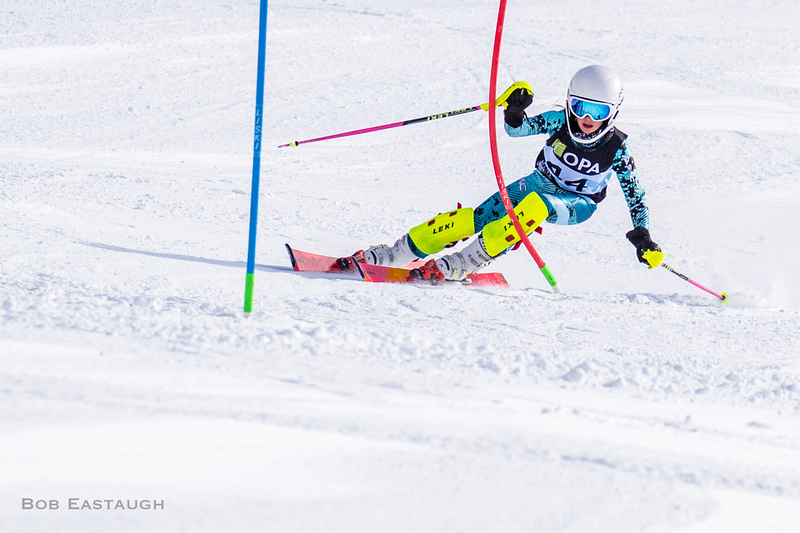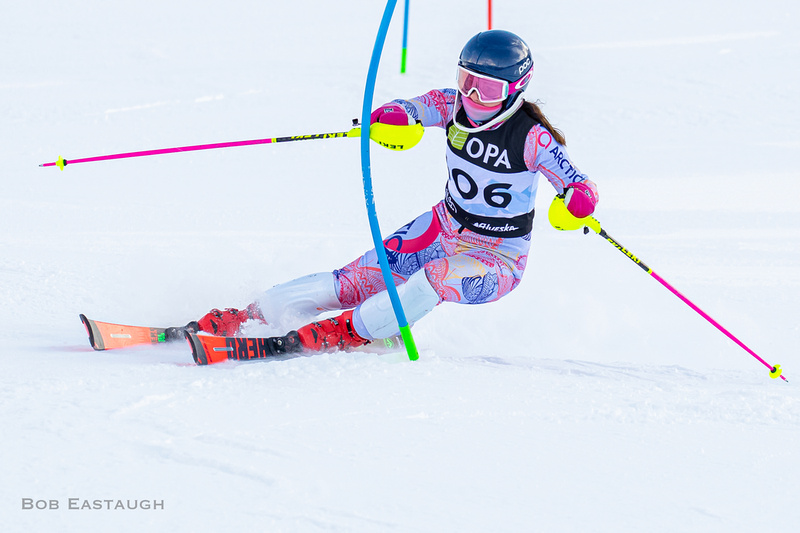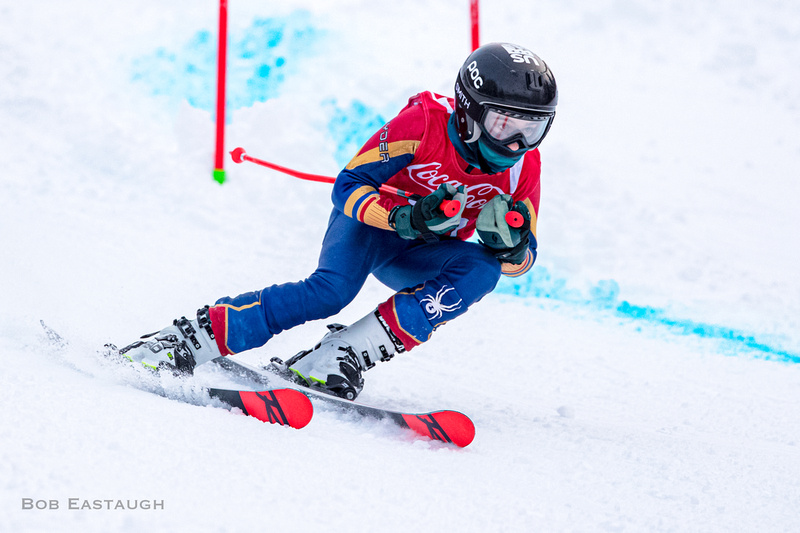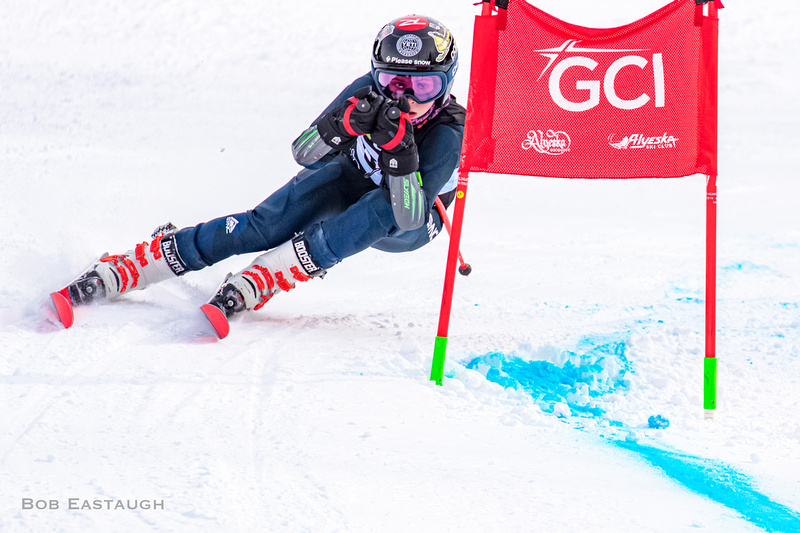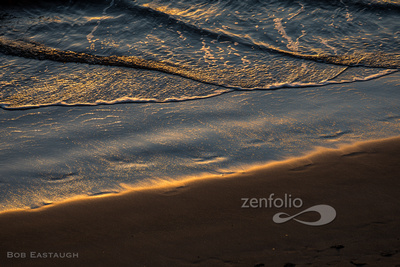Intersections: Ski Racing and Photography; Aesthetics and Athletics, Part 6
It is hard, perhaps impossible, to separate alpine racing’s aesthetics from alpine racing’s athletics. And perhaps we shouldn’t try very hard.
In the interests of objectivity, we should ignore the enthusiasm of the sport’s most serious fans and the athletes’ devotion to racing. Even so, any objective assessment must conclude that alpine racing is extraordinarily attractive, i.e., that its athletics are remarkably aesthetic.
At its dramatic pinnacle, it can be a spectacle, think Wengen or Kitzbuehel. But even at a local level it is alluring. Beauty surrounds and infuses race venues, whether located in high mountains or rich forests. A newly set course on a buffed-out hill is pristine in idealized perfection, tantalizing and enticing in graceful use of the hill’s features, rolls, and transitions. Gates and course dye marking accent and complement the terrain. The sport’s challenging technical and tactical requirements meld power and grace, strength and finesse. Racers are solo performers whose limbs and torsos move with graphic purity, extemporaneously applying practiced skills to meet the novel demands of each gate on each course; racers react to, play with, try to dominate the race corridor as it descends down the pitches and undulations of the race hill. Their bodies, their limbs and torsos in constant motion, project vividly against relatively featureless backdrops. It is athletic theater, modern dance, moving foot to foot around obstacles on the ribbon of snow that encompasses not only the optimal line that will produce the shortest run time, but also all the outlier lines left as each succeeding performer interprets the course-setter’s score. The lines a properly edged race ski leaves -- carves -- are geometric arcs, clean, precise. This is performance art, practiced in vast studios on great canvases that are hundreds, sometimes thousands, of feet long. And, like most performance art, it is ephemeral, evanescent. The racers’ physical movements, no matter how perfect, immediately disappear without a trace. The arcs left by their skis -- no matter how perfectly they balance speed and control, no matter how perfectly the radius of each arc, each turn, matches some imagined and hypothetical paragon at each gate, no tighter than ideal, no longer than needed, and no matter how perfectly edges cut no deeper than necessary -- are inevitably erased, if not by successive racers or course workers, then by weather or grooming tractors. The racers’ arcs are calligraphy written with disappearing ink.
Of course the art is a byproduct of the sport, neither intended nor preserved. Time, not art, is the medium of ski racing. But even an unintended byproduct can have beauty.
It is hard, perhaps impossible, to separate alpine racing’s aesthetics from alpine racing’s athletics. And perhaps we shouldn’t try very hard.
In the interests of objectivity, we should ignore the enthusiasm of the sport’s most serious fans and the athletes’ devotion to racing. Even so, any objective assessment must conclude that alpine racing is extraordinarily attractive, i.e., that its athletics are remarkably aesthetic.
At its dramatic pinnacle, it can be a spectacle, think Wengen or Kitzbuehel. But even at a local level it is alluring. Beauty surrounds and infuses race venues, whether located in high mountains or rich forests. A newly set course on a buffed-out hill is pristine in idealized perfection, tantalizing and enticing in graceful use of the hill’s features, rolls, and transitions. Gates and course dye marking accent and complement the terrain. The sport’s challenging technical and tactical requirements meld power and grace, strength and finesse. Racers are solo performers whose limbs and torsos move with graphic purity, extemporaneously applying practiced skills to meet the novel demands of each gate on each course; racers react to, play with, try to dominate the race corridor as it descends down the pitches and undulations of the race hill. Their bodies, their limbs and torsos in constant motion, project vividly against relatively featureless backdrops. It is athletic theater, modern dance, moving foot to foot around obstacles on the ribbon of snow that encompasses not only the optimal line that will produce the shortest run time, but also all the outlier lines left as each succeeding performer interprets the course-setter’s score. The lines a properly edged race ski leaves -- carves -- are geometric arcs, clean, precise. This is performance art, practiced in vast studios on great canvases that are hundreds, sometimes thousands, of feet long. And, like most performance art, it is ephemeral, evanescent. The racers’ physical movements, no matter how perfect, immediately disappear without a trace. The arcs left by their skis -- no matter how perfectly they balance speed and control, no matter how perfectly the radius of each arc, each turn, matches some imagined and hypothetical paragon at each gate, no tighter than ideal and no longer than needed, and no matter how perfectly edges cut no deeper than necessary -- are inevitably erased, if not by successive racers or course workers, then by weather or grooming tractors. The racers’ arcs are calligraphy written with disappearing ink.
Of course the art is a byproduct of the sport, neither intended nor preserved. Time, not art, is the medium of ski racing. But even an unintended byproduct can have beauty.
Venues: Alyeska and the surrounding scene
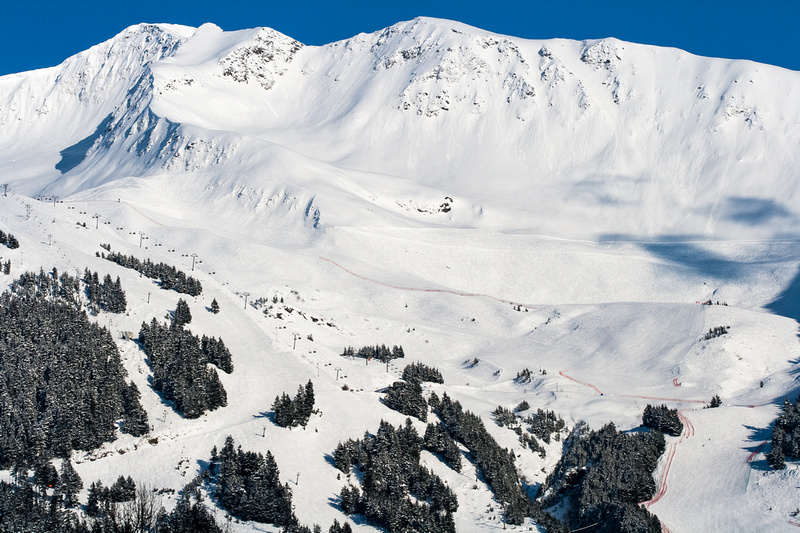

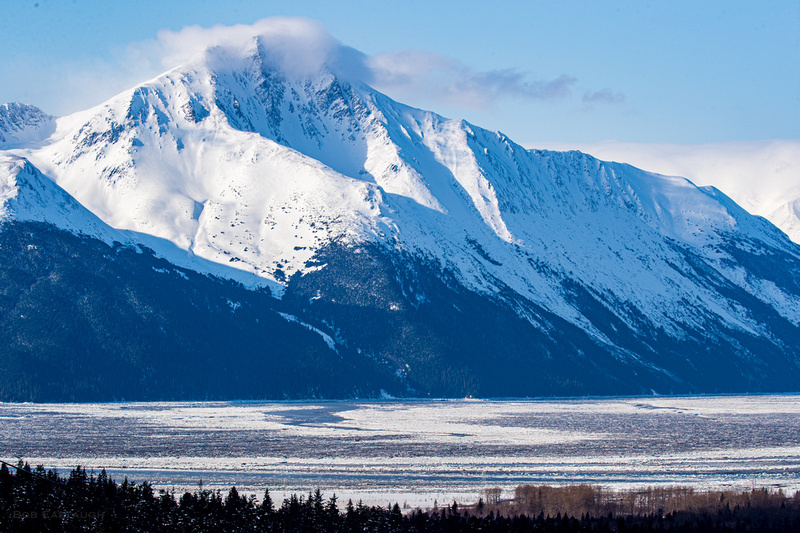

A slalom race corridor:
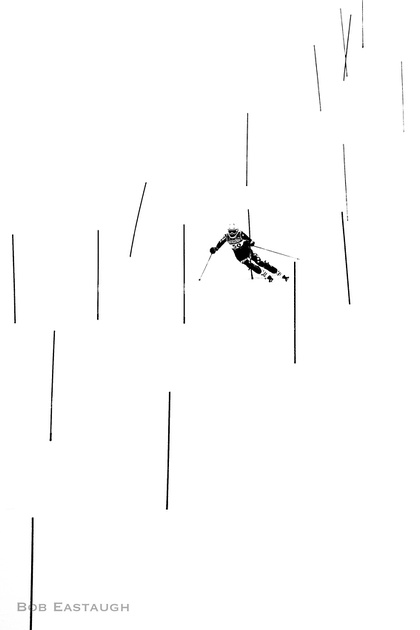

On-line, long-radius arcs on a Super-G course, with blue dye helping define the corridor:
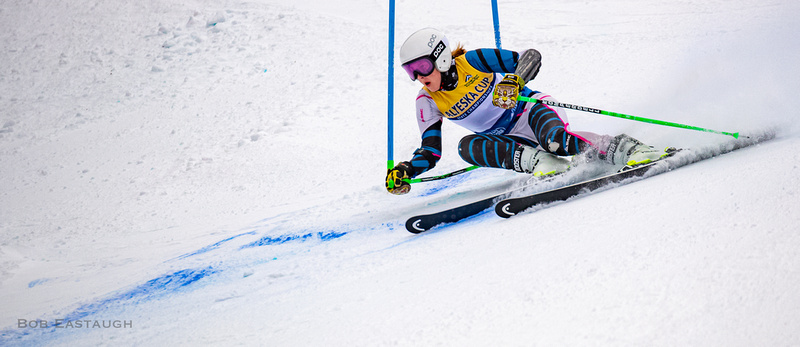

Extemporaneous movements on course by young and older racers
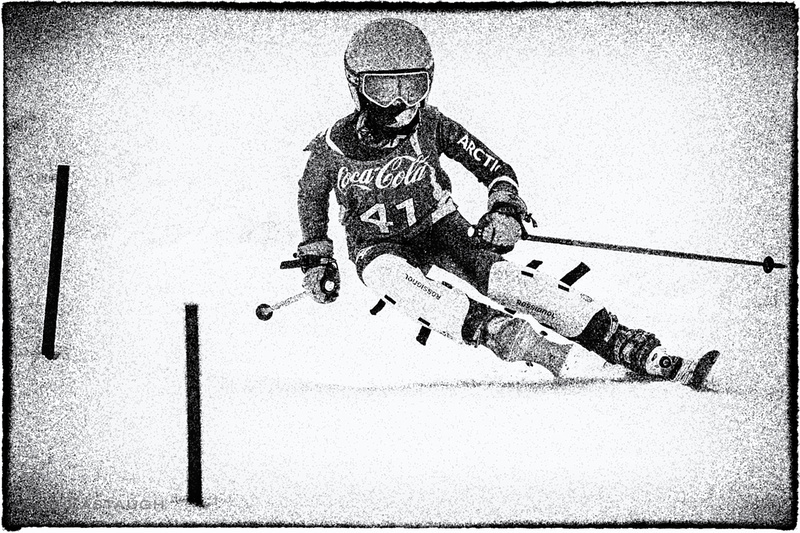

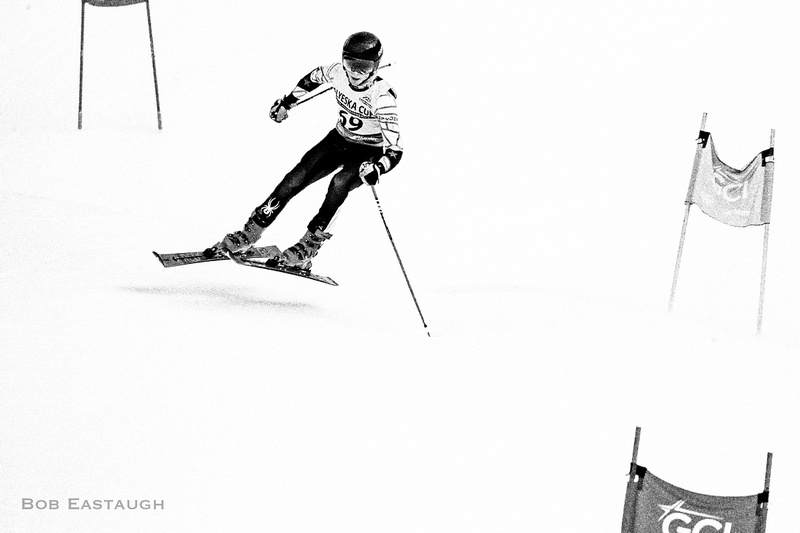

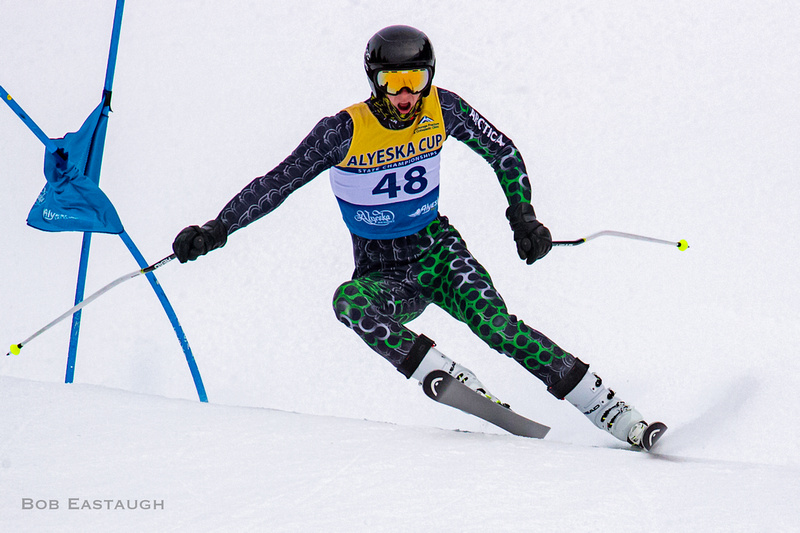

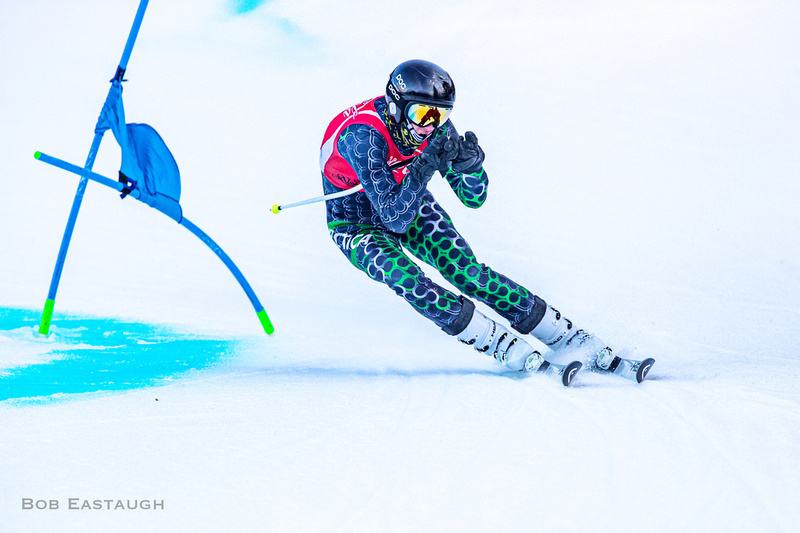

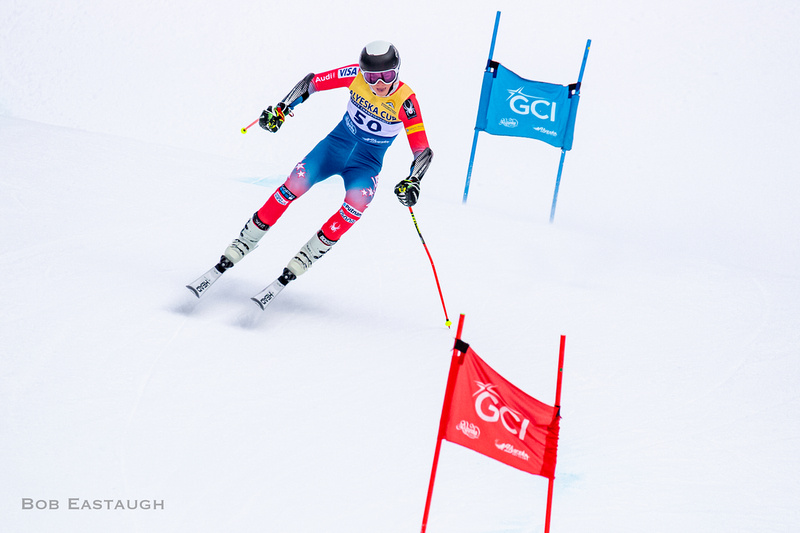

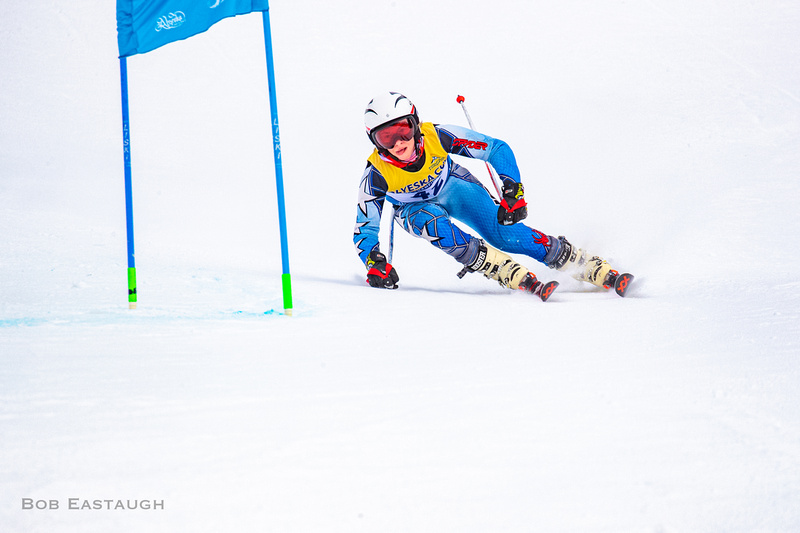

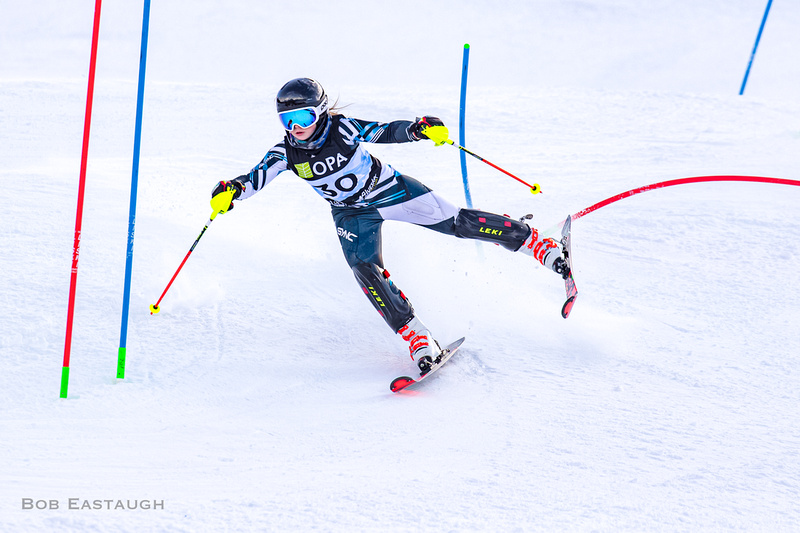

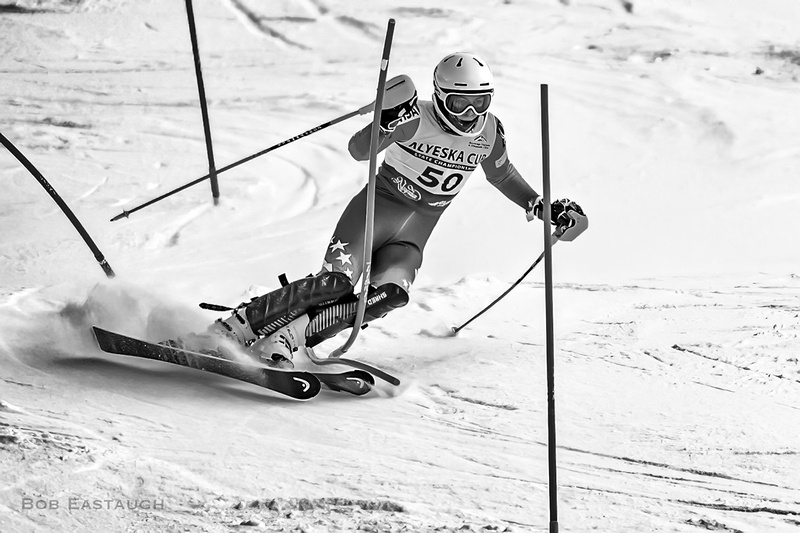

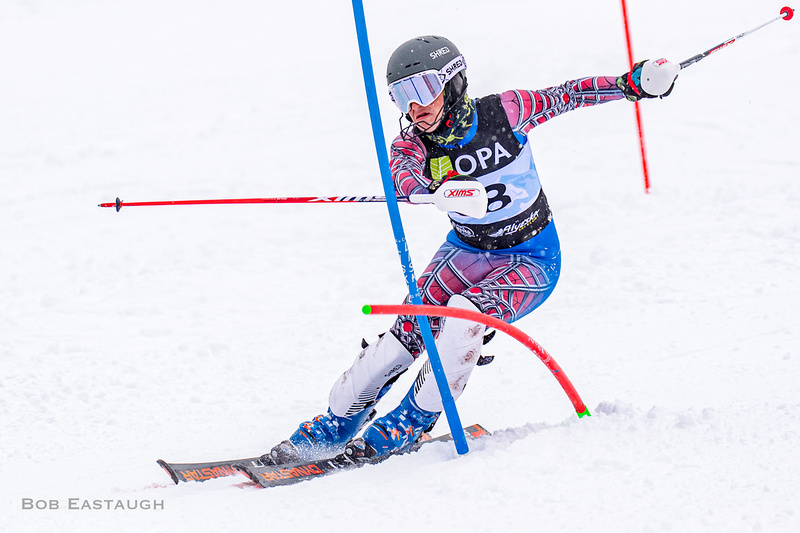

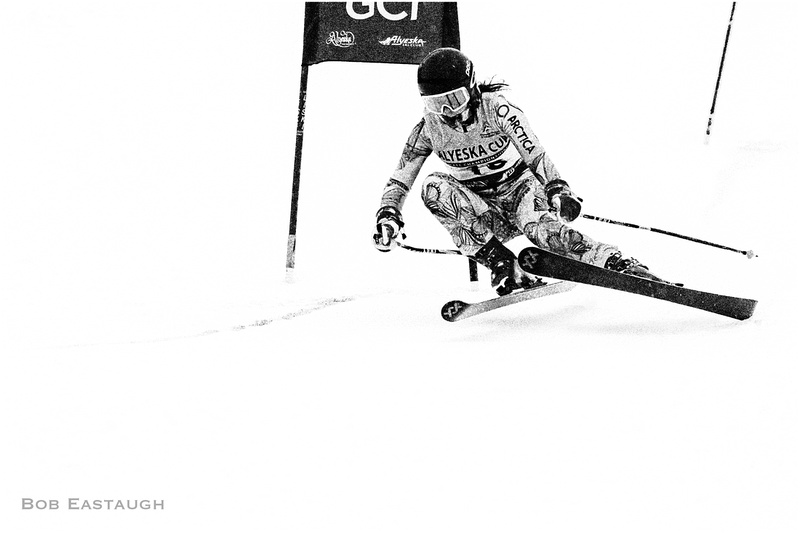

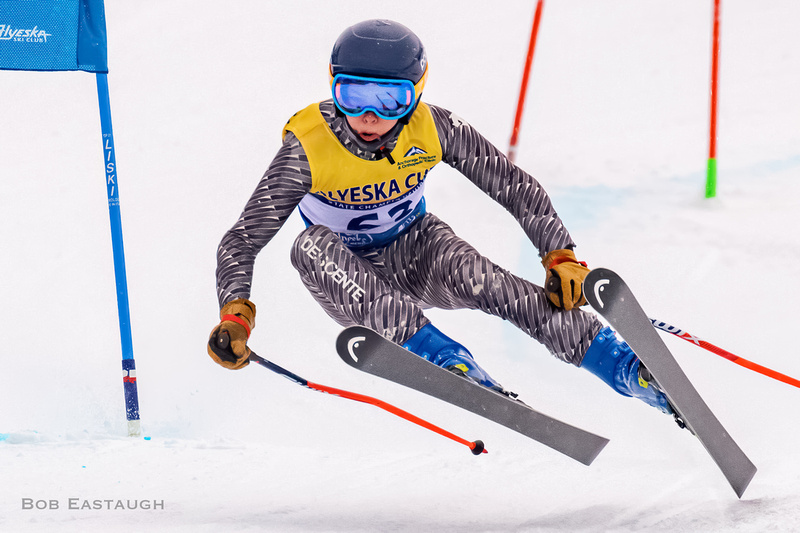

Attempts at perfection: highly skilled racers carve arcs no longer or deeper than needed.
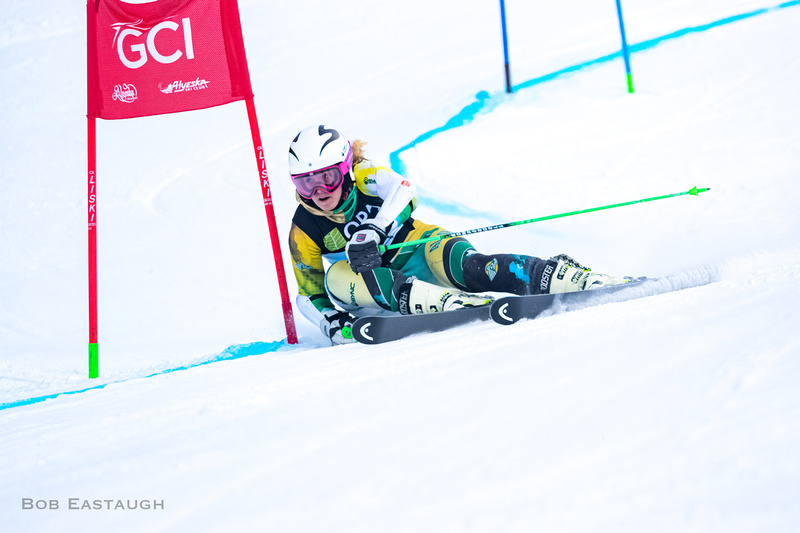

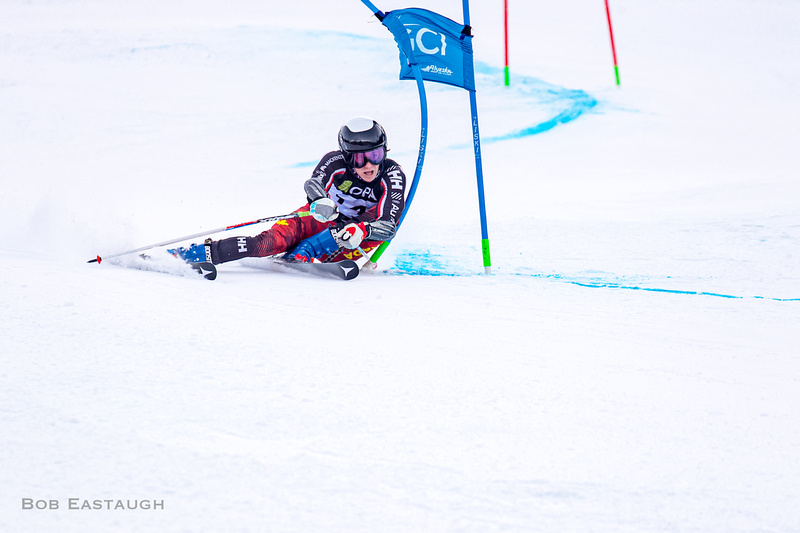

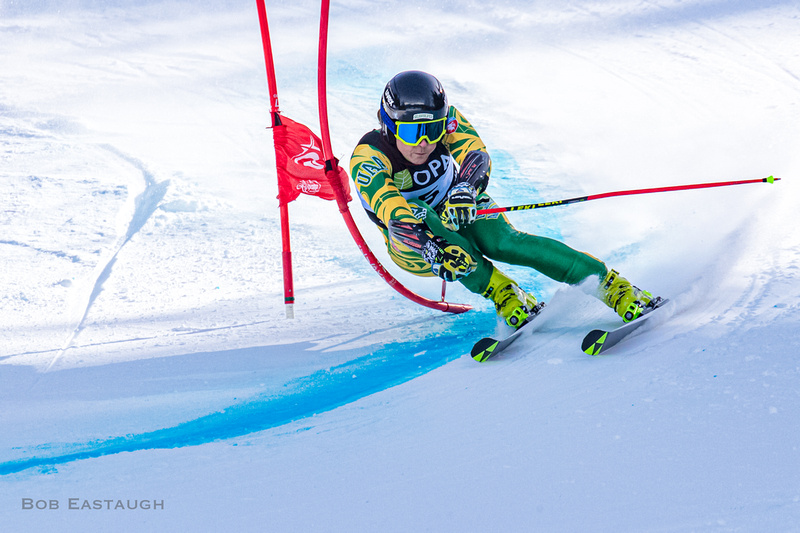

Even so, there is a wide variety of line choice. Two skilled racers take different lines in the same gate, and here the corridor containing clean, well-arced lines is at least six-feet wide. The racer on the left has a wider, longer line, and although you might think a tighter line is shorter and therefore faster, the racer on the left had the fastest run and won this race.
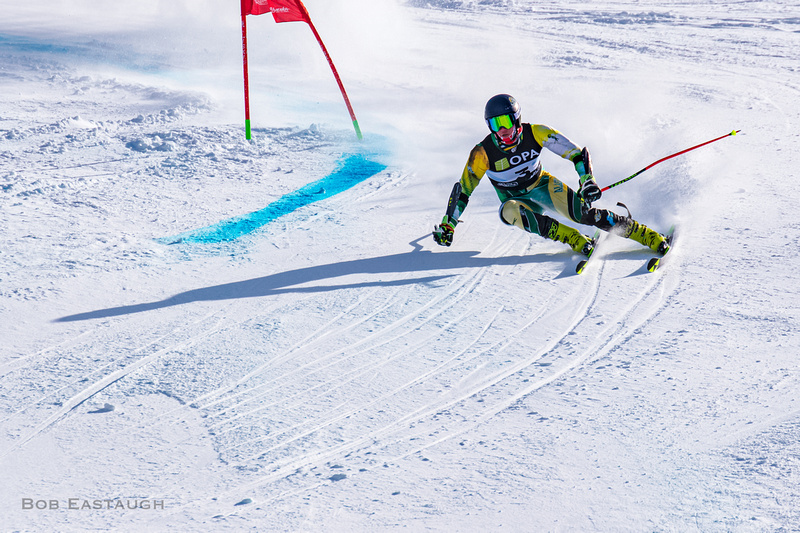

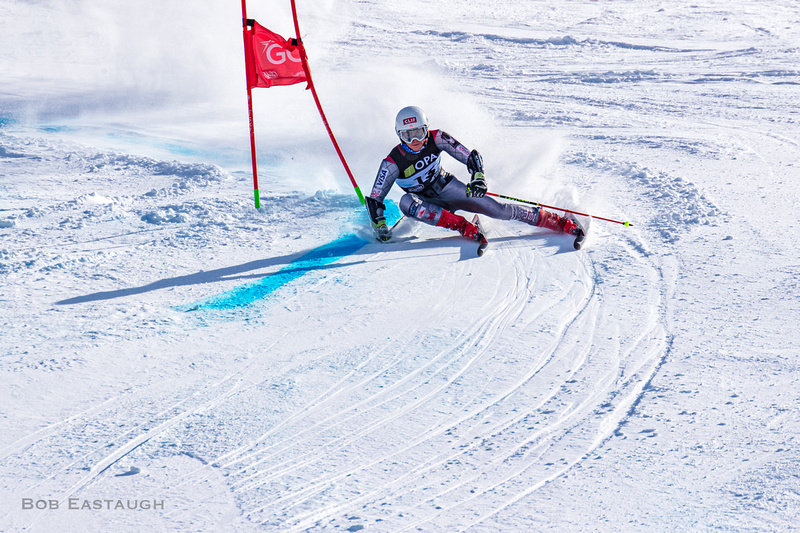

Even in this high-edge angle, short radius turn, the racer displaces very little snow, efficiently and dynamically maximizing speed while optimizing the line; the close-up shows the edge angle of her right ski is so great that the inside of her right boot nearly touches the snow. Arcs carved by earlier racers are still visible.
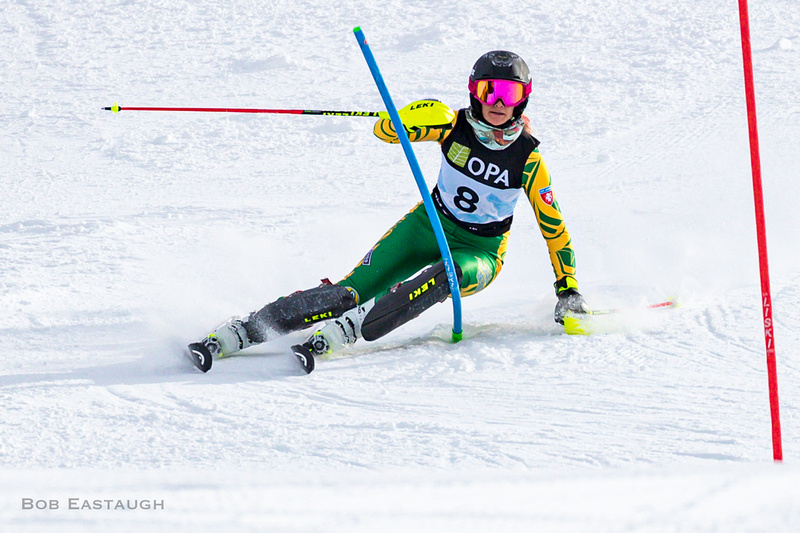

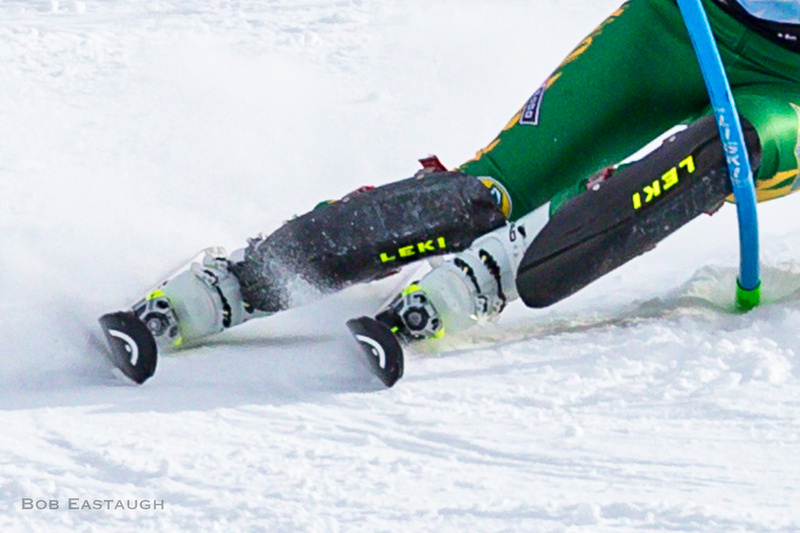

These very skilled young racers demonstrate both fine technique (how to turn) and tactics (where to turn). They are melding athletics and aesthetics.
